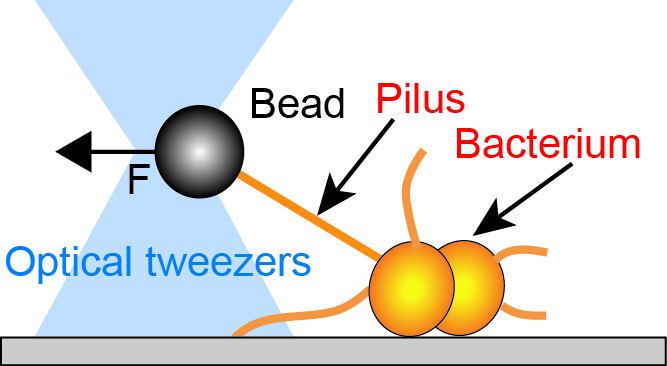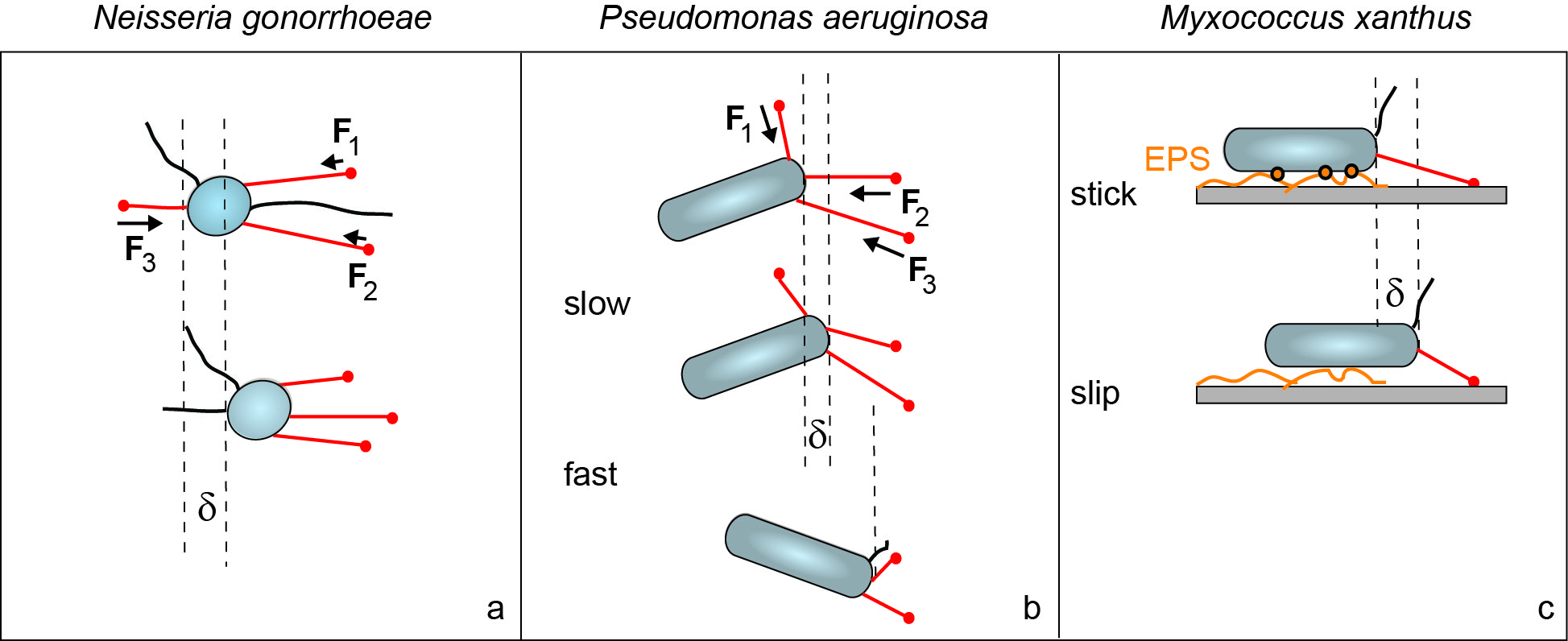Type IV pili
Many bacterial species generate type IV pili (T4P). They are multifunctional polymers that extend from the bacterial surface by about one micrometer. Their diverse functions include adhesion to host cells and other surfaces, formation of biofilms, motility, and transformation.

Electron micrograph of the human pathogen Neisseria gonorrhoeae. Type IV pili are visible as lines emanating from the bacteria. They form bundles that interact with bundles of other bacteria.
Type IV pili are polymerized from pilin subunits. Their length is dynamic; pili elongate by polymerization and retract by depolymerization. If a load is attached during retraction, force is generated on the load. We use optical tweezers to characterize dynamics and force generation of single pili in living bacteria. By genetically manipulating the bacteria, we are addressing the molecular mechanism of force generation.

Characterizing single T4P dynamics. Using laser tweezers, a micrometer-sized bead is brought in close vicinity of the bacterium. When a pilus binds to the bead in the laser trap and retracts, it deflects the bead from the center of the trap. The optical restoring force increases linearly with the deflection, and thus, the force generated by the pilus can be measured.
Many species use type IV pili for moving over surfaces. They use the pili like grappling hooks that attach to the surface, and while they retract, they pull the bacterium towards the point of attachment. A single bacterium generates multiple pili. How do the pili coordinate? In round bacteria, pili are randomly distributed around the contour of the cell. Purely mechanical coordination is sufficient for generating movement. Since pili are randomly generated, the force imbalance destabilizes bonds and bacteria move. In other words, a tug-of-war between pili generates surface movement. In rod-shaped bacteria, pili are preferentially localized to the cell poles, and thus, set the direction of movement.

Mechanical coordination of type IV pili for surface movement. a) In round N. gonorrhoeae T4P are distributed around the cell body. Their relatively smooth movement is consistent with a tug-of-war mechanism. b) In rod-shaped P. aeruginosa T4P are polar. Their jerky crawling movement is consistent with a tug-of-war which is dominated by the rupture of T4P from the surface. c) Rod-like M. xanthus show slip-stick movement resulting from interaction with secreted extracellular polysaccharides (EPS). red: pili attached to the surface, black: pili detached from the surface.